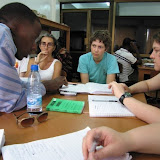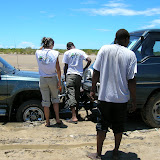Practice of Community Development Model.
There are many ways one can think of to “improve” the communities that exist throughout the world. Regardless of what kind of community one is looking at, or what region of the world, it seems that every community is in need of “change” or development. The way that people go about development of a community can have a lasting impact on the effectiveness and sustainability of such development. Poor development can create little benefit to the local community. Poor planning on even the most innovative or effective development can mean that the community cannot sustain the development, and regresses back to its prior state, or worse. Community Planning and Development has become a hot issues among non-profits as it is seen as the way to improve the lives of people not only in the third-world countries, but here at home in the USA. Community Development can be an effective tool for helping a wide range of communities, from inner city children in New York to finding a safe water source for a small village in Africa. In the book Voices of Change, Hall in his introduction, gives a very clear definition of Community Development:
“The explicit aim of [community development] is to bring about a more just society in which no groups or classes of people suffer from the deprivation of life’s essentials, such as food, clothing, shelter, and health, and in which all enjoy basic human freedoms and dignity. . .[community development] provides a framework in which people seeking to overcome oppressive situations can come to understand the social forces in operation and gain strength in collection action . . .people who desire knowledge to bring about a more free and less oppressive world engage in the investigation of reality in order to get a better understanding of the problems and their root causes. The real investigator in this case is not the traditional researcher . . . rather it is the ordinary people with problems to solve who form a partnership with the researcher . . .”
Community Development comes in a variety of methods and philosophies. Some methods ask the local community to pinpoint problems and then go about fixing them. These methods have proven successful in some situations, but often leave the community feeling disenfranchised with itself, ashamed of its many problems that seem overwhelming. Other community development philosophies leave out the local community and turn to outside agencies to implement change and renew the community’s spirit. This has proved mostly ineffective because communities tend to mistrust outside agencies and never feel as if they own or have a say in the process.1Participatory Sustainable Community Development (PSCD) is one of the fastest growing philosophies in the community development field.
Project implementation “Approach”
=>It is a BOTTOM-UP APPROACH in contrast to the traditional hierarchical, TOP-DOWN APPROACH
The village or community is the basic unit of planning and action. Village priorities must be decided by the villagers and not by an outside authority. Only when village residents direct their future will they own it. And only then will they be able to manage the development process that will bring them out of poverty.
This is accomplished by providing leadership so that the villagers:
- Express their hopes and aspirations for the future
- Identify and analyze the problems which stand in the way of achieving these hopes and aspirations
- Find solutions to the problems with the help of the Service/Resources Center staff
- Carry out the solutions and then operate and maintain the mechanisms to achieve them
- Participatory involvement by all stakeholders in the village is vital in creating a positive development climate.
- Participation is the key to human motivation.
- Villagers must have the opportunity to participate and have ownership in the decisions affecting their lives.
- Women must be empowered to play significant roles in improving village life.
- Youth need to express their hopes and dreams for the future and see them materialize through their own efforts and actions.
- Community elders must contribute their wisdom in shaping the directions of village life.
- Each village or Community that supports full participation of its members is ready for project participation.










